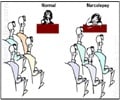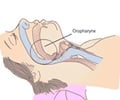According to a study, among patients who were identified as likely having moderate to severe obstructive sleep apnea, treatment based in primary care was not clinically inferior.

Ching Li Chai-Coetzer, M.B.B.S., Ph.D., of the Adelaide Institute for Sleep Health, Repatriation General Hospital, Daw Park, South Australia, and colleagues conducted a study to compare the clinical efficacy and within-trial costs of a simplified model of diagnosis and care in primary care relative to that in specialist sleep centers. The randomized, controlled, noninferiority study included 155 patients with obstructive sleep apnea who were treated at primary care practices (n = 81) in metropolitan Adelaide, three rural regions of South Australia or at a university hospital sleep medicine center in Adelaide, Australia (n = 74), between September 2008 and June 2010. Both interventions (primary care management vs. usual care in a specialist sleep center) included continuous positive airway pressure, mandibular (lower jaw) advancement splints, or conservative measures only. The primary outcome measure was 6-month change in scores on the Epworth Sleepiness Scale (ESS). Secondary outcomes included disease-specific and general quality of life measures, obstructive sleep apnea symptoms, adherence to using continuous positive airway pressure, patient satisfaction, and health care costs.
The researchers found that there were significant improvements in ESS scores from baseline to 6 months in both groups. "The mean [average] ESS for the entire study population was 12.6. The mean ESS scores in the primary care group improved from 12.8 at baseline to 7.0 at 6 months, for an adjusted mean difference of 5.8 and in the specialist group from a baseline mean of 12.5 to 7.0 at 6 months, for an adjusted mean difference of 5.4. After controlling for baseline ESS score and region, the adjusted difference in the mean change in the ESS score was -0.13." The results the support noninferiority of primary care management.
There were no differences in secondary outcome measures between groups. Seventeen patients (21 percent) withdrew from the study in the primary care group vs. 6 patients (8 percent) in the specialist group. Adherence to CPAP use among those using it at 6 months was no different between the 2 groups.
Analysis of within-trial sleep-related diagnostic and treatment costs revealed that primary care management of obstructive sleep apnea was approximately 40 percent less expensive than specialist care. The equivalent total average costs per patient were estimated at U.S. $1,819 in the primary care group and U.S. $3,068 in the specialist group. Sleep study costs, sleep physician consultations, and travel costs appeared to be the main contributors to the increased within-trial costs in the specialist group.
"In conclusion, in this randomized controlled study, a simplified management strategy for obstructive sleep apnea based in primary care was not clinically inferior to standard care in a specialist sleep center. It possibly could be delivered at a lower cost. Thus, with adequate training of primary care physicians and practice nurses and with appropriate funding models to support an ambulatory strategy, primary care management of obstructive sleep apnea has the potential to improve patient access to sleep services. This would be particularly beneficial for rural and remote regions, as well as developing nations, where access to specialist services can be limited," the authors write.
 MEDINDIA
MEDINDIA




 Email
Email










